Bryony Hooper is the Digital Preservation Manager at the University of Sheffield
The University of Sheffield’s Digital Preservation Service and Special Collections, Heritage and Archives teams recently got the chance to showcase some of the hard work colleagues have undertaken over the last academic year. As part of a Library All-Staff in person event in June, projects from 2024/25 were given the chance to showcase their work for staff to view and engage with. And we are not ones to miss an opportunity to advocate for digital preservation!
The 2024/25 Library Action plan had an action to, “Develop our service vision, infrastructure and workflows to advance our digital Cultural Collections”. This action included work to develop our digital preservation workflows, in particular how we transfer data off physical media carriers (floppy discs, optical discs, Memory cards and external drives) to our digital preservation system.
The Old Curiosity Shop of Physical Media Carriers
To engage Library staff with these workflows, we chose to create a rather eclectic display of the different media carriers we had represented in our collections. Some staff enjoyed the trip down memory lane, seeing a range of carriers, from reel-to-reel to mini-disc to SD cards and pen drives. While for others it was their first chance to learn about these carriers and handle them.
We had already created an in-house guide on identifying media carriers (that utilised the Museum of Obsolete Media’s thorough research), to aid staff with identification. This guidance was used on the day to provide a bit more context about when the different carriers were in use and also how much storage capacity they had.
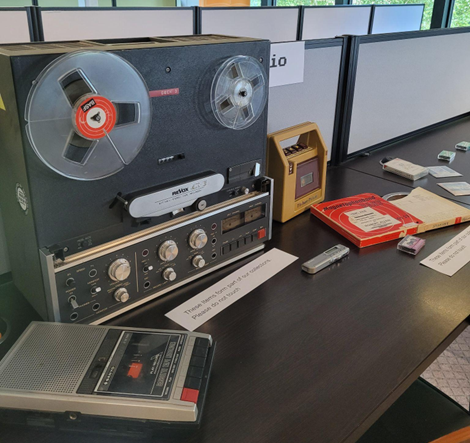 |
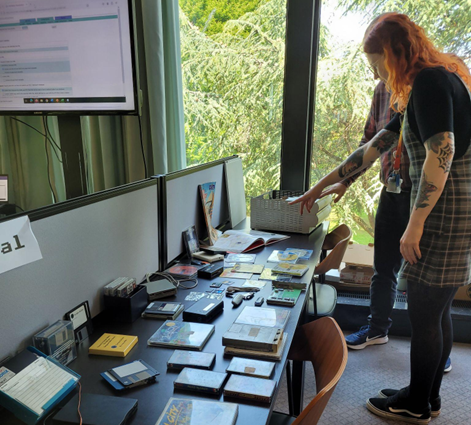 |
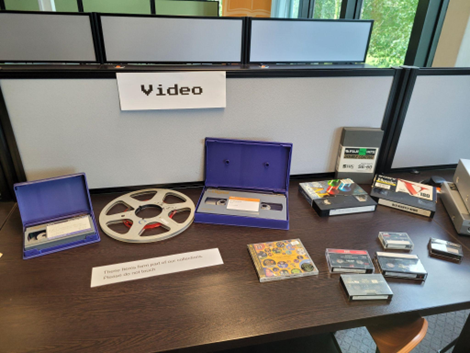 |
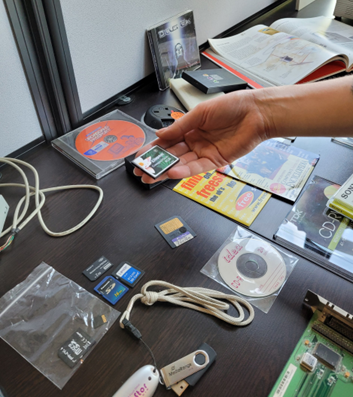 |
Alongside the carriers, we displayed equipment used to read, hear or view the media. Please note that the 1980s Fisher Price tape recorder you see in the picture was a stand-in for our real library equipment!
Thanks to the enthusiasm of some colleagues and their own retro computing collections, we were also able to include some carriers beyond the scope of our Library collections. These included 8 and 5 ¼ inch floppy discs, gaming video cassettes, Laser Discs and even some SCSI drives. These additions allowed us to demonstrate the development of technology over time, and highlight additional issues involved with transferring data off obsolete carriers, including availability of hardware to read the data, and incompatibility with modern operating systems.
Can you plot the workflow?
We challenged staff on the day to try and put together potential workflows for different media carriers we have in our Archive collections.
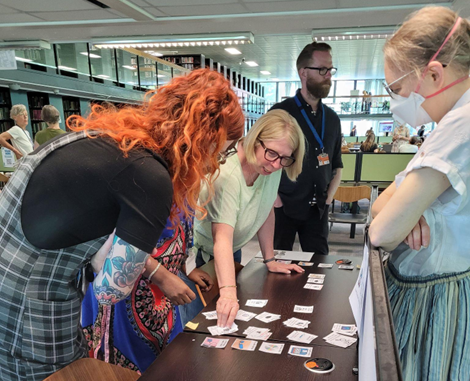 |
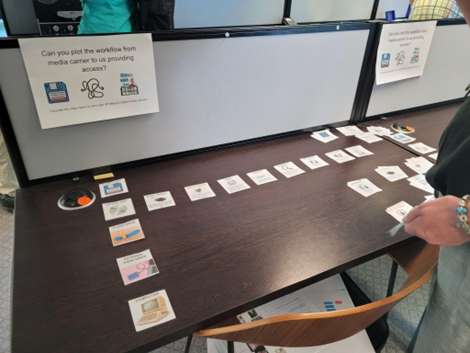 |
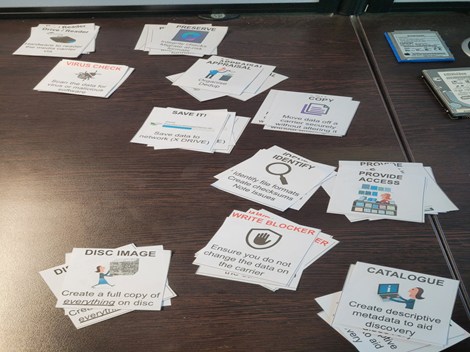 |
Inspired in part by the Digital Preservation Games Group, we tried to make our display more interactive by asking staff to consider the different steps needed for transferring data off different carriers and plot those steps in order.
Staff soon realised that there were a lot of actions to consider! And the activity gave us a great opportunity to speak about the work we do on behalf of the University.
The University of Sheffield staff have documented workflows for six different types of transfer. Archive staff are being trained in undertaking most of them, and we continue to look for efficiencies in our work, and new tools to improve the process. At some point we also hope to share our workflow with the wider community via the COPTRS Community Owned Workflows

Image: Illustration of our workflow
Reflecting upon the day
The event was a great success, and we had staff from across the different Library teams come over and interact with the display and activity. It was clear from the conversations we had that we had given them an insight into our niche world, and our effort to make digital object workflow documentation more engaging paid off.














































































































































Comments
Hi Cate
Apologies, I have only just seen your message now.
Happy to share (...and this is probably a good reminder for me to upload it to COPTR's Community Owned Workflows too!).
Email me at digitalpreservation [at] sheffield.ac.uk and I'll send it over
Best wishes
Bryony